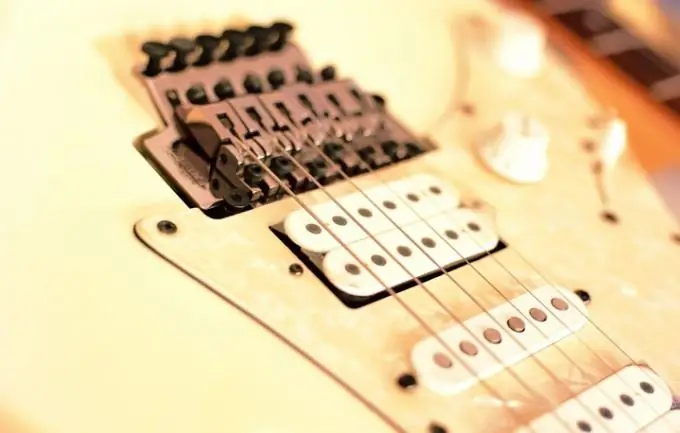Scale tuning is changing the lengths of each of the guitar strings individually in order to get the correct sound at all frets. Scale tuning is based on the principle that the middle of the string, regardless of the neck length, should always be above the 12th fret, and it is at the 12th fret that the pressed string should sound an octave higher than the open string.

It is necessary
Tuner, screwdriver for adjusting the scale
Instructions
Step 1
Install new strings before you start tuning the scale. This is important because worn strings can sound unpredictable, which will greatly interfere with tuning. After that, if necessary, tune the truss and the pitch of the strings, because if you want to do this after adjusting the scale, then you will have to tune the truss and pitch of the strings again.
Step 2
The tuner can help you in setting the scale. The more accurate it is, the better. Play one of the strings and tune it with the tuner to the desired value as precisely as possible.
Step 3
Now hold down the same string at the 12th fret and play the sound. With a properly tuned scale, the tuner should show the same note as when playing an open string, but one octave higher (twice as high). If the tuner shows a slight deviation from this note, you will have to adjust the scale.
Step 4
Look for the seat adjusters in the bridge area. Take a suitable screwdriver, and then proceed on the basis of the following considerations: if the sound is too low at the twelfth fret, then you need to shorten the string (the saddles must be moved away from the bridge), if the sound is too high, then the string must be lengthened (the saddles must be moved closer to the bridge). The amount of change in length is difficult to determine by eye without proper experience, so at first try not to make very strong changes in the scale.
Step 5
After you have slightly changed the scale of the string, tune the open string again with the tuner, and then again determine the pitch of the string clamped at the twelfth fret. By changing this pitch, draw a conclusion about how and how you should carry out further changes in the length of the string, guided by the principles described in the previous paragraph.
Step 6
Do the same for all the other strings.






